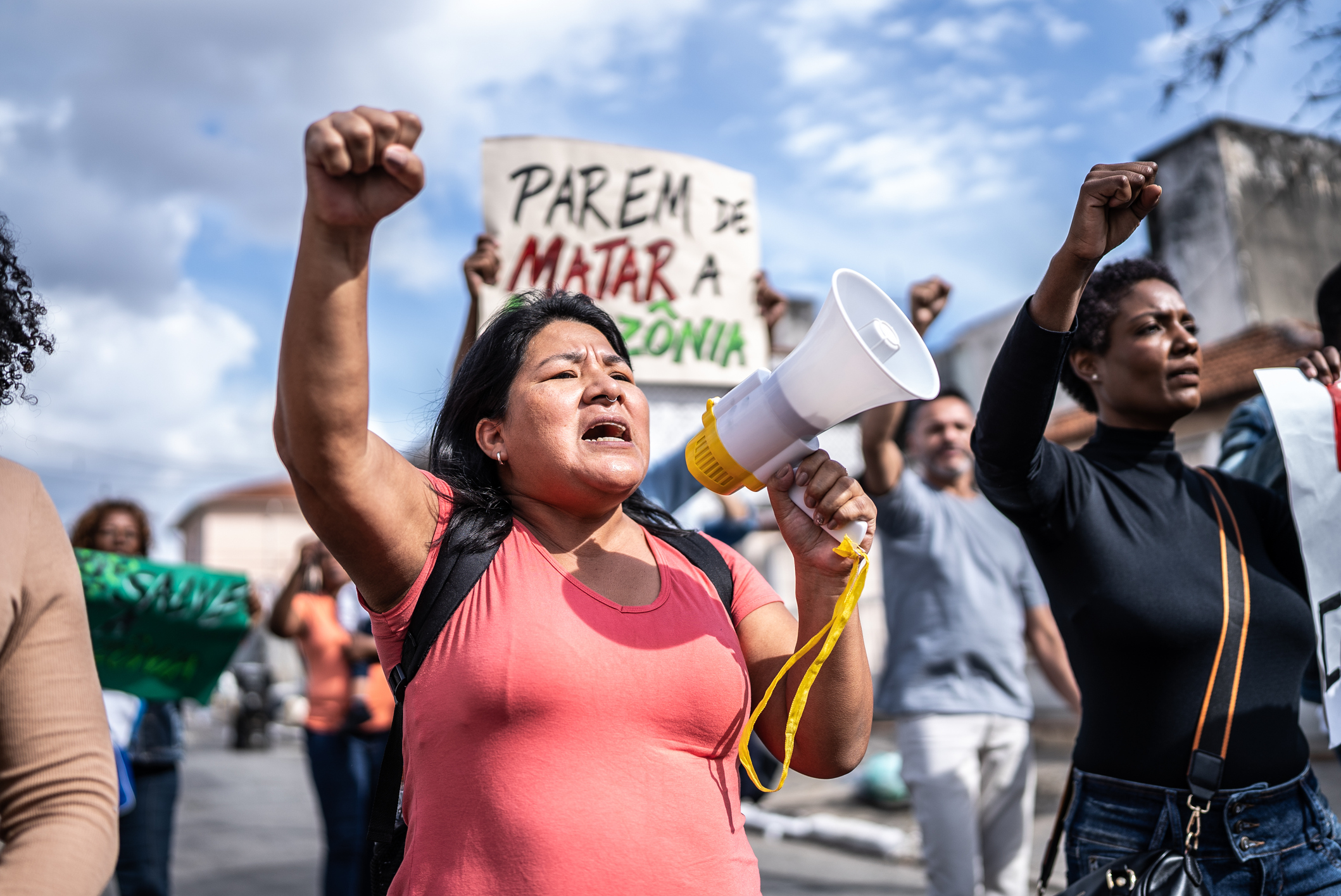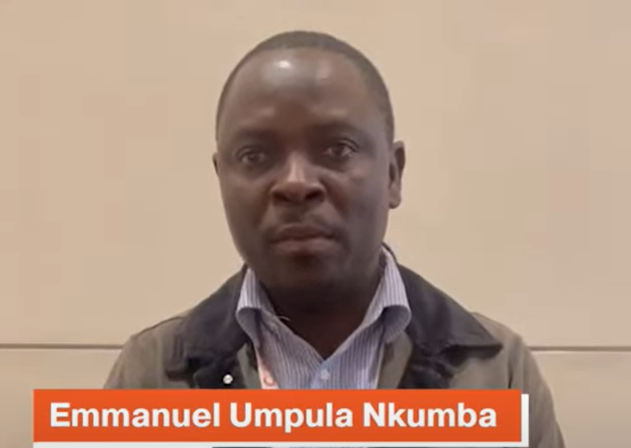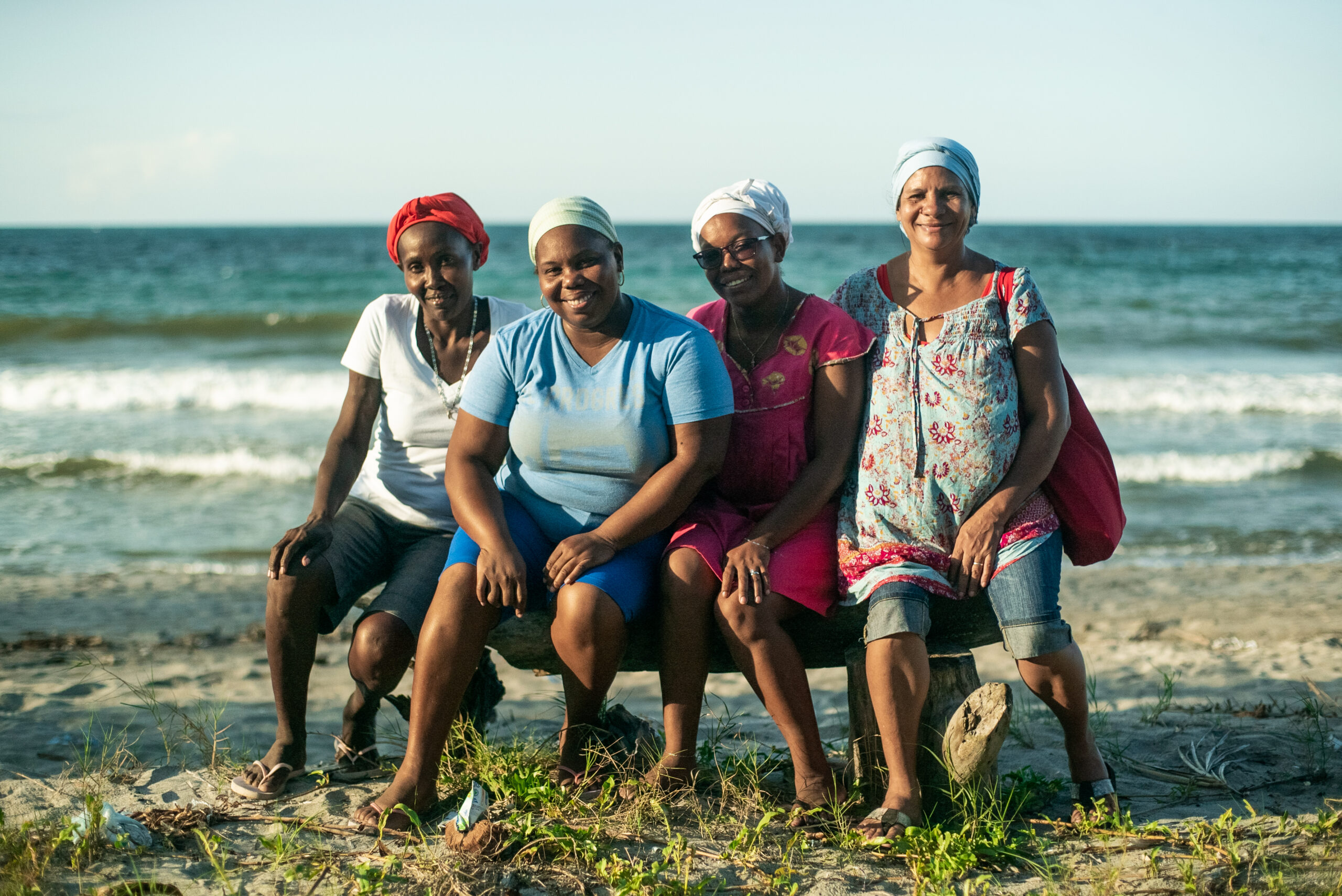David Mattingly, the Fund’s vice president for programs, explains what climate justice means, what it looks like in action, and how the Fund is supporting climate justice around the world.

We believe there can be no human rights without climate justice, and no climate justice without human rights. But what does climate justice actually mean? How does it differ from traditional environmentalism? And what does it look like in action?
We sat down with David Mattingly, the Fund’s vice president for programs, to learn more.
In one sentence, what is climate justice?
David Mattingly: Climate justice seeks to address the disproportionate impacts of climate change on vulnerable or already marginalized people by putting their knowledge, experience, and priorities at the center of efforts to limit the worst effects of climate change and ensure a rights-respecting transition to a regenerative global economy.
Ok, let’s unpack that. What do human rights have to do with climate justice?
Human rights and climate justice go hand in hand. Like environmentalism, climate justice is an approach to protecting the planet and preserving our natural resources. But it also explicitly considers the social, economic, and political aspects of climate change.
We say there can be no human rights without climate justice, and no climate justice without human rights because these two things are inextricably linked. Indigenous communities and climate justice activists don’t see a distinction between a healthy planet and healthy societies. The climate crisis disproportionately impacts already vulnerable or marginalized populations—due to geography, poverty, gender, Indigenous or minority status, national or social origin, birth or other status, or disability. These are the same people whose human rights are most often violated. At the same time, many top-down initiatives to curb climate change are reinforcing inequalities and further marginalizing these groups.
Indigenous communities and climate justice activists don’t see a distinction between a healthy planet and healthy societies.
So, climate justice puts human rights and Indigenous knowledge at the center of the fight for a safe environment. By creating a world that respects human rights and transforming the rapacious systems that fuel climate change, we can protect both people and the planet.
What do you mean by the disproportionate impacts of climate change?
The climate crisis is an existential problem for the entire world. But it’s also a threat multiplier—it exacerbates already existing inequalities.
We can see this on a global scale. Industrialized countries and major economies, like the United States and China, are responsible for the lion’s share of the greenhouse gas emissions. All of Africa, on the other hand, contributes less than 4 percent to global emissions. A study found that, between 1990 and 2015, the wealthiest 10 percent of people were responsible for 52 percent of global emissions growth; the poorest half of the global population were responsible for just 7 percent. But those people who are least responsible for climate change are bearing the brunt of its impacts. Communities in Sub-Saharan Africa, South Asia, and small island states, who lack access to mitigation or adaptation technologies, are most vulnerable to climate-induced resource scarcity, extreme weather events, and more.
…recognizing the particular vulnerabilities faced by women, Indigenous groups, Afro-descendent communities, and others does not mean they are passive victims. Indeed, they are powerful change agents.
A similar dynamic plays out at the local level. People with more privilege enjoy resources and protections that marginalized people don’t. Take, for example, extreme heat. Last year was one of the warmest on record, and heat-related deaths have risen precipitously over the last few decades. But extreme heat doesn’t affect everyone equally. Migrant laborers who work outdoors, older people, children, and communities without reliable energy infrastructure or access to water are much more likely to die from extreme heat than people sitting indoors with the air conditioning on. So, these already marginalized groups face disproportionate impacts from climate change. Climate justice acknowledges that imbalance and seeks to address it by facilitating a just transition.
It’s critical to note that recognizing the particular vulnerabilities faced by women, Indigenous groups, Afro-descendent communities, and others does not mean they are passive victims. Indeed, they are powerful change agents. In fact, feminist, native, and Black activist groups and movements are at the forefront of climate activism.
What is a just transition?
The idea of a just transition refers to a set of principles, processes, and practices that build economic and political power to shift from an extractive global economy to a regenerative economy. Critically, a just transition must be driven by the people who are most affected by climate change.
Many climate initiatives are essentially top-down solutions being imposed by the same people that are causing climate change. That’s a big problem for at least two reasons. First, it reinforces the same toxic power dynamics that have marginalized these communities in the first place. Second, it often exacerbates existing human rights abuses.
Here’s just one example. There’s a massive need right now for cobalt, because it’s a crucial component in the lithium batteries that power electric vehicles. The explosion of the electric car market has caused demand to skyrocket. More than half of the world’s cobalt comes from the Democratic Republic of the Congo (DRC), which has huge reserves. But the people mining cobalt in the DRC are often informal laborers, who work in dangerous conditions with no protection for little pay. And entire communities have been uprooted for access to their land. So, the transition to electric vehicles—a top-down solution to climate change—is benefiting consumers in the Global North, environmental policymakers, and auto manufacturers. But it’s been deadly for Congolese communities. Activists there are working to address this injustice and end the cycle of exploitation.
[READ: Ending Exploitation in the DRC’s Deadly Cobalt Mines]
The just transition aims to create a sustainable future for all by addressing these injustices and creating healthier power dynamics. It puts the people affected by climate change in the driver’s seat, centering their needs and perspectives instead of corporate incentives.
How is the Fund supporting climate justice?
Fund grantees around the world are responding to the climate crisis with innovative, people-centered solutions. We provide flexible funding and technical assistance to develop and scale their work, and so they can adapt to changing conditions.
Many of the human rights defenders we support at the Fund are on the front lines of the climate crisis. When we surveyed Fund grantees last year, 70 percent of respondents said they were directly affected by the climate crisis. These activists come from and work with communities that are disproportionately impacted by climate change. So, whether they focus on strengthening labor rights or protecting people on the move, the effects of climate change are impacting their work.
Another way the Fund supports climate justice is by defending environmental and land rights activists. Being an environmental defender is one of the most dangerous jobs on Earth. In 2022, environmental defenders were killed at a rate of one every other day, most of them in Latin America. We offer technical training, support for protection and psychosocial services, and emergency funding for security needs to activists facing threats and persecution for their vital work.
Do you have a question about human rights, philanthropy, or the Fund? Send your suggestions for future Fund 101s to press@globalhumanrights.org.
Sign up to our newsletter
Add some impact to your inbox.


